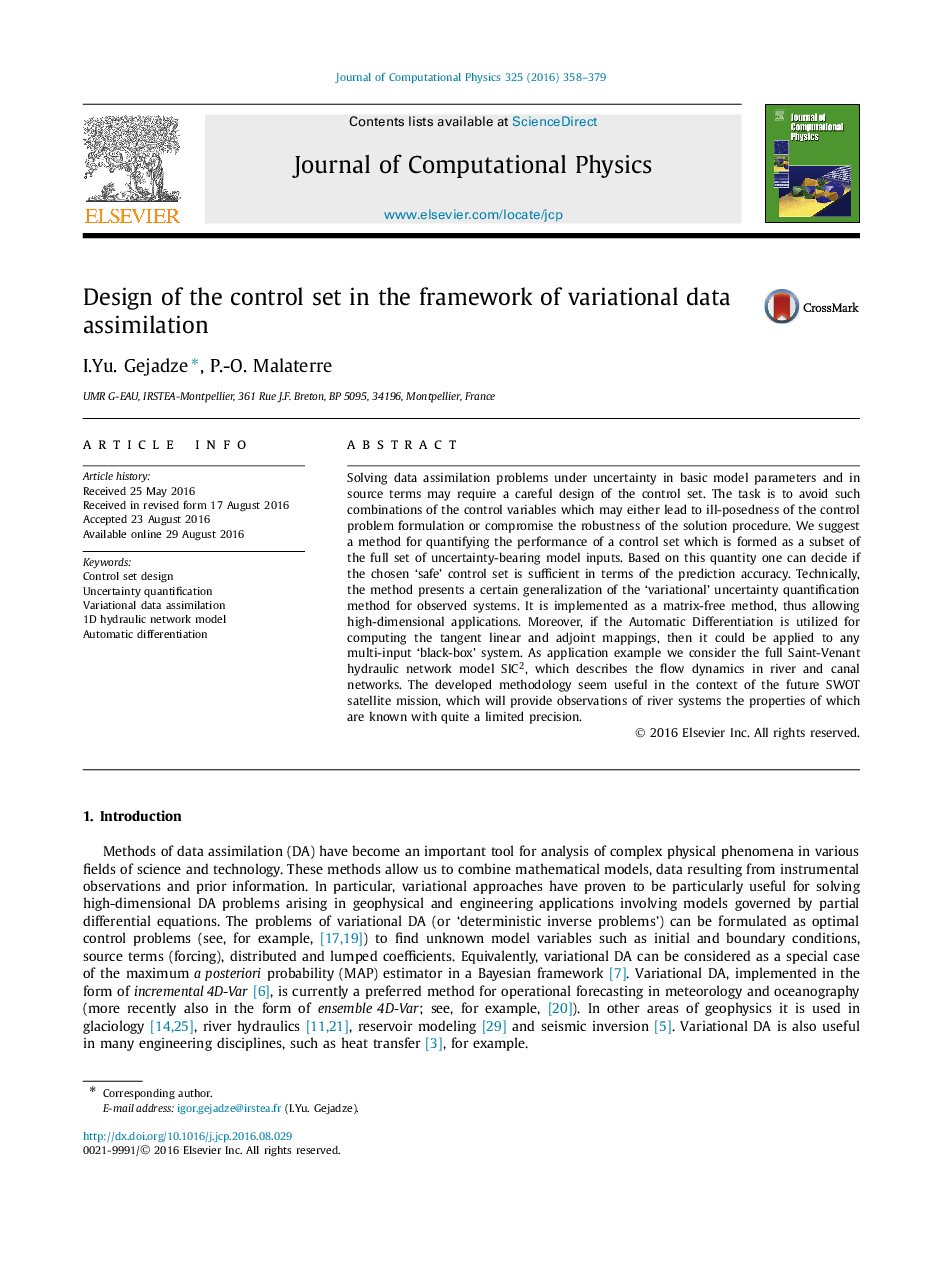| Article ID | Journal | Published Year | Pages | File Type |
|---|---|---|---|---|
| 4968011 | Journal of Computational Physics | 2016 | 22 Pages |
Abstract
Solving data assimilation problems under uncertainty in basic model parameters and in source terms may require a careful design of the control set. The task is to avoid such combinations of the control variables which may either lead to ill-posedness of the control problem formulation or compromise the robustness of the solution procedure. We suggest a method for quantifying the performance of a control set which is formed as a subset of the full set of uncertainty-bearing model inputs. Based on this quantity one can decide if the chosen 'safe' control set is sufficient in terms of the prediction accuracy. Technically, the method presents a certain generalization of the 'variational' uncertainty quantification method for observed systems. It is implemented as a matrix-free method, thus allowing high-dimensional applications. Moreover, if the Automatic Differentiation is utilized for computing the tangent linear and adjoint mappings, then it could be applied to any multi-input 'black-box' system. As application example we consider the full Saint-Venant hydraulic network model SIC2, which describes the flow dynamics in river and canal networks. The developed methodology seem useful in the context of the future SWOT satellite mission, which will provide observations of river systems the properties of which are known with quite a limited precision.
Related Topics
Physical Sciences and Engineering
Computer Science
Computer Science Applications
Authors
I.Yu. Gejadze, P.-O. Malaterre,
